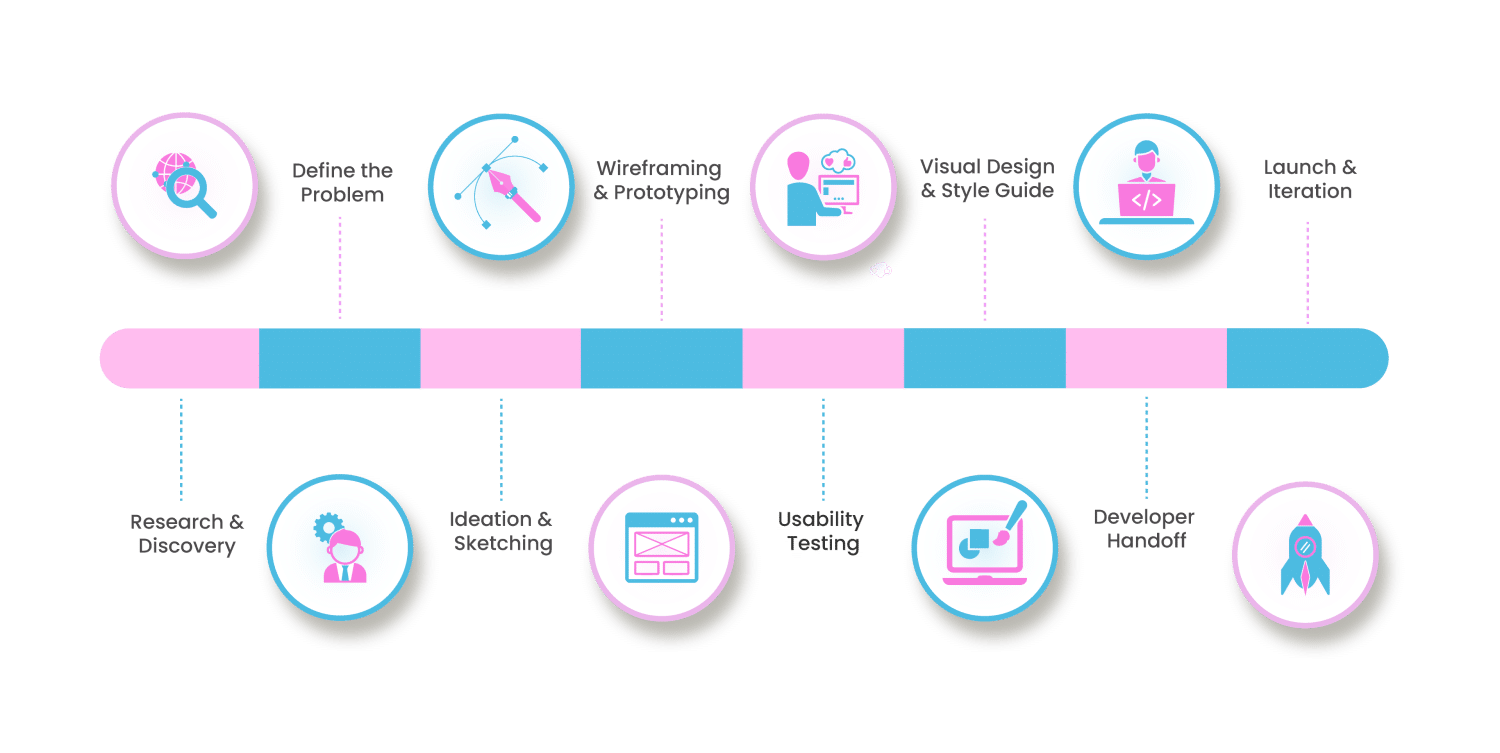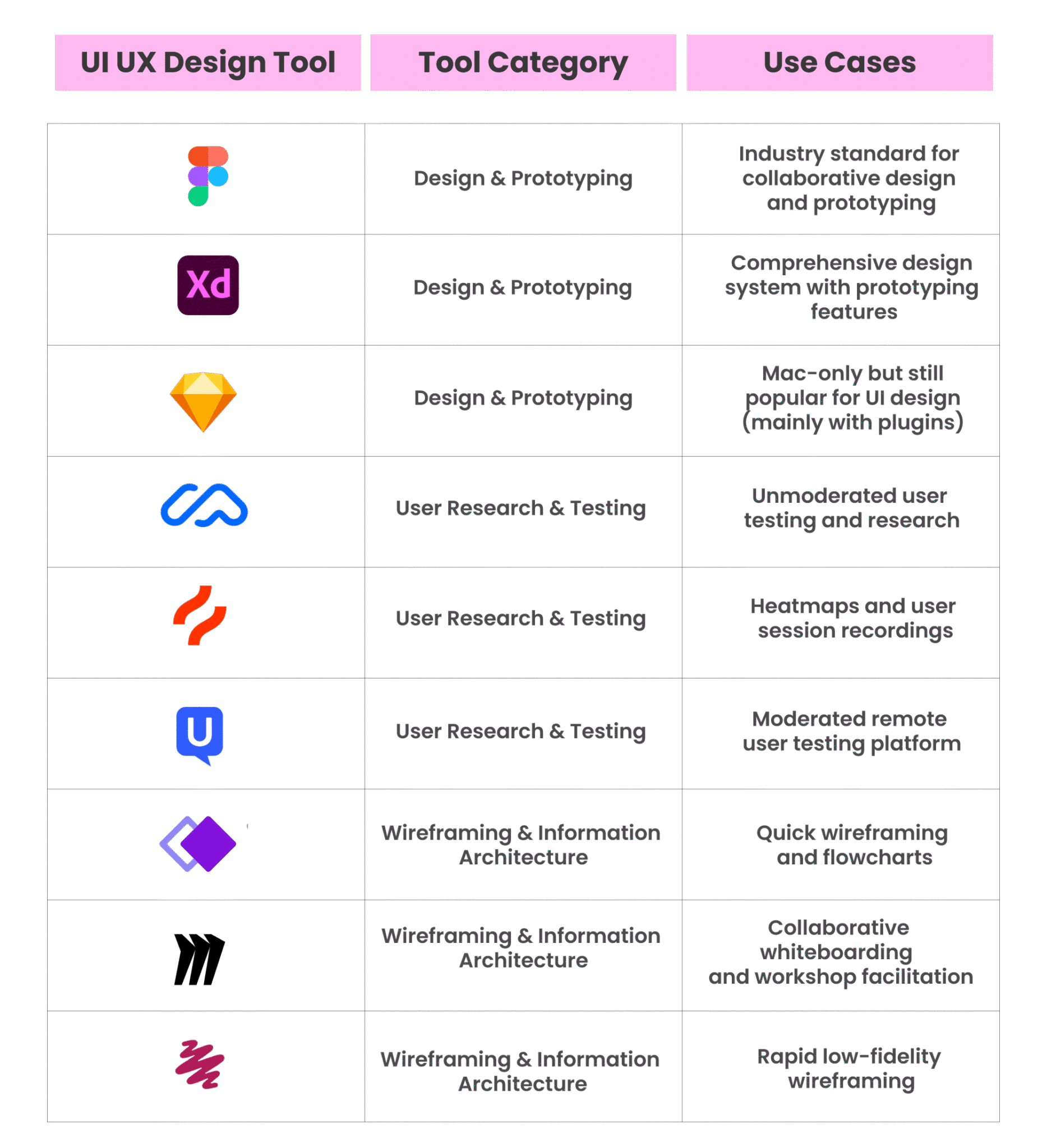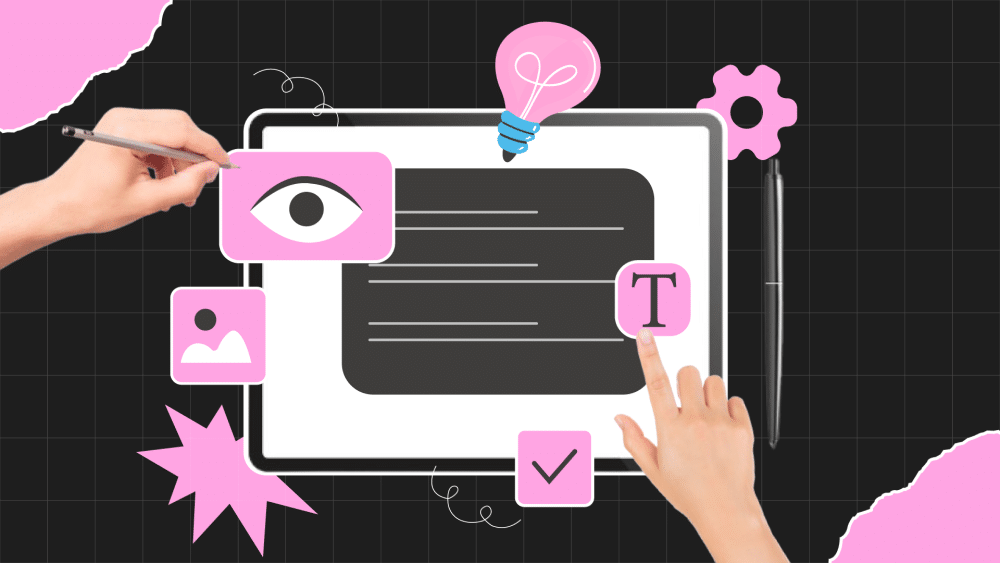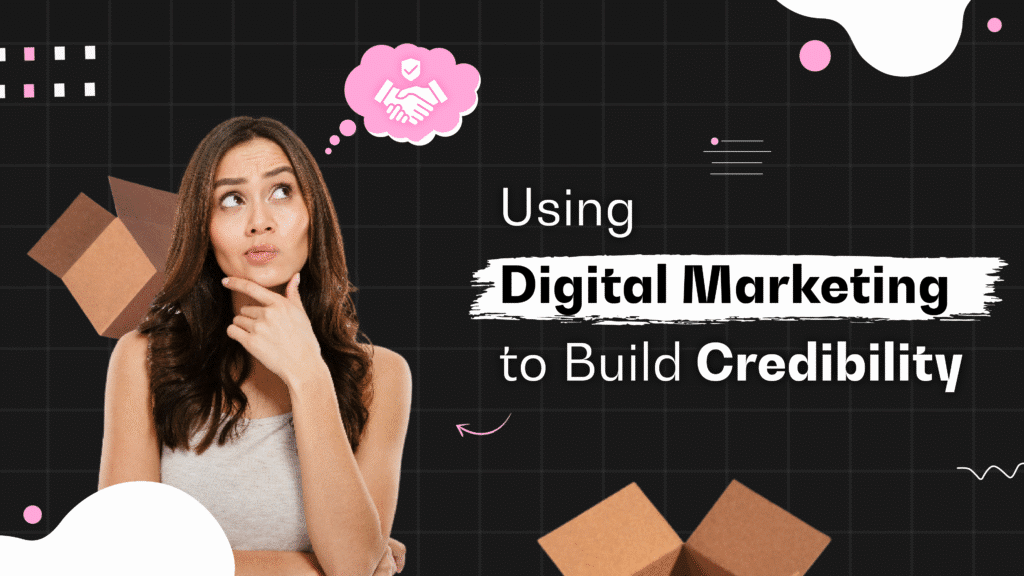Have you ever noticed why using some apps feels effortless while others make you just finish your task and close the application?
This is largely due to UI UX design, which are two closely related fields that can make or break your product.
Whether it is scrolling through Instagram, ordering food on DoorDash, or booking a ride on Uber, UI UX designers have carefully designed every tap, swipe, and click to make your app experience engaging.
But guess what?
Great UI/UX design isn’t just about making things look pretty. It’s about understanding human psychology and solving real problems so that you can create app experiences that users want to engage with.
In this guide, we’ll understand the UI UX design basics that every beginner should know in 2025.
Let’s start with what UI and UX design are and how they are not as similar as you think.
What is UI UX Design? (And How They Differ)
Let’s clear up the confusion right away. UI and UX are not the same thing, even though they’re often mentioned together as UI/UX.
UI (User Interface) Design is everything your users see and interact with:
- Buttons, icons, and navigation menus
- Typography, colors, and spacing
- Layout and visual hierarchy
- Interactive elements and animations
A well-designed UI is not just visually appealing, but it’s on-brand and guides users through your product.
UX (User Experience) Design is about how users feel when using your product. This includes:
- User research and persona development
- Information architecture and user flows
- Wireframing and prototyping
- Usability testing and iteration
Here’s a simple way for you to remember it: UI is how your product looks, while UX is how it works.
You can have a stunning interface (great UI) that frustrates users because it’s confusing to navigate (poor UX).
Or you might have a highly functional product (great UX) that looks outdated and unappealing (poor UI).
The magic happens when users find that both work together simultaneously to create engaging user experiences.
Core Principles Every UI UX Designer Must Know
If you master these fundamental principles, they’ll set you apart as a designer and ensure your products solve user problems:

1. User-Centric Design
Everything you create must prioritize your users’ needs, goals, and pain points over your personal preferences or business assumptions.
This means conducting user research, creating personas, and constantly working on your design decisions with real user feedback.
And remember not to forget how important web design is while you’re creating user-centric UI and UX.
2. Simplicity and Clarity
You’ll find that the best designs are often the simplest ones. Your interface should be clean, uncluttered, and easy to understand at first sight.
And remember that if users need a manual to navigate your product, you’ve already lost them.
3. Consistency
Users shouldn’t have to relearn how your product works on different screens or sections.
You can build consistency by using patterns in content structure and visual elements like colors, typography, and spacing.
This builds trust and reduces load for your users.
4. Accessibility
Make sure your designs work for all users, including those with disabilities, through features like readable text, keyboard navigation, and screen reader support.
Accessibility isn’t just the right thing to do, but it’s also smart business for the product because it expands your potential user base.
5. Feedback and Responsiveness
Your users need to know what’s happening when they interact with your product. So, provide them clear feedback through progress indicators, hover and click animations.
6. Efficiency
It should be clear to you that great UI/UX doesn’t just solve problems – it makes using your product feel effortless and even enjoyable.
This is where you include micro-interactions, smooth animations, and thoughtful details that change products into experiences.
The Complete UI UX Design Process: Step-by-Step
The UI UX design process is a structured approach to convert ideas into user-centered digital experiences.
Here’s how you can successfully approach every project:

1. Research & Discovery
Before you sketch a single wireframe, you need to understand your users and their needs.
For research purposes, you can conduct user interviews, competitor analysis, and market research by using tools like Typeform, SurveyMonkey, Maze, or even simple Google Forms for user research.
This foundation phase determines whether your design will succeed or fail.
2.Define the Problem
Based on your research, you will be required to create clear problem statements and project goals by developing user personas, mapping out user journeys, and establishing project requirements.
This step changes your raw research into insights that will help you to make design decisions.
3. Ideation & Sketching
In this phase, you need to brainstorm solutions and explore different approaches.
You can start with low-fidelity sketches to quickly explore ideas without wasting time on visual details. Your goal is quantity over quality at this stage.
4. Wireframing & Prototyping
Here you change your best ideas into more detailed wireframes and interactive prototypes.
Wireframes help you focus on layout, hierarchy, and functionality without visual distractions.
Prototypes allow you to test interactions and user flows before investing in high-fidelity designs.
Some popular tools are Figma, Sketch, and Adobe XD for creating wireframes and prototypes.
5. Usability Testing
This is where you validate your assumptions with real users. Don’t skip this step because it’s where you’ll find the biggest opportunities for improvement.
Testing methods:
- Moderated user testing sessions
- Unmoderated remote testing
- A/B testing for specific elements
- Guerrilla testing for quick feedback
During this phase, you can look for task completion rates, time on task, error rates, and user satisfaction scores.
6. Visual Design & Style Guide
Once your UX foundation becomes solid, then focus on the visual layer, like colors, typography, imagery, and brand elements.
These design choices not only shape user perception but also influence how users engage with your product or site, so it’s also important for you to know how your UI and UX affect SEO.
7. Developer Handoff
When final UI elements are created with attention to aesthetics and branding, you can then hand off assets and specifications to developers.
Here you can include interactive prototypes, style guide, design specification, and measurements.
You can use tools like Figma, Zeplin, or Avocode to streamline this handoff process.
8. Launch & Iteration
You must know that design is never truly finished. After launch, keep monitoring user behavior and gathering feedback to identify opportunities for improvement.
Some key metrics you can track are task completion rates, support ticket volume, user satisfaction scores, and user engagement.
Once you have this data, you can use it to prioritize future iterations and improvements.
We follow the same process to complete UI/UX projects for our clients, and here we are sharing a short UI and UX case study of Recooty, where we shared our thought process behind their overall design.
Do check it out to understand what goes behind great UI/UX.
Best Tools for UI UX Designers in 2025

By utilizing the right tools, you can significantly enhance your design workflow and output quality.
Here we have listed some essential tools and their use case by category that every UI UX designer should know:
1. Design & Prototyping
- Figma – Industry standard for collaborative design and prototyping
- Adobe XD – Comprehensive design system with prototyping features
- Sketch – Mac-only but still popular for UI design (mainly with plugins)
2. User Research & Testing
- Maze – Unmoderated user testing and research
- Hotjar – Heatmaps and user session recordings
- UserTesting – Moderated remote user testing platform
3. Wireframing & Information Architecture
- Whimsical – Quick wireframing and flowcharts
- Miro – Collaborative whiteboarding and workshop facilitation
- Balsamiq – Rapid low-fidelity wireframing
4. Handoff & Collaboration
- Zeplin – Design specifications and developer handoff
- Avocode – Asset export and design inspection
- Principle – Advanced prototyping and animation
Here’s a little tip for you: don’t try to master every tool at once. You can start with Figma for design, Maze for testing, and Miro for collaboration, covering most of your workflow needs.
How to Get Started in UI UX Design (Even as a Complete Beginner)
If you’re just a beginner UI UX designer, we have created a roadmap for you to get started, regardless of your background:
Step 1: Build Your Foundation
When you’re starting, your main focus should be on learning UI UX design basics that you can do with free resources available in the market.
For example, the Google UX Design course on Coursera and Nielsen Norman Group articles and research.

Step 2: Master Essential Tools
You must focus on learning one tool deeply rather than trying to learn everything.
You can start with Figma because it’s free, web-based, and industry-standard. And to build muscle memory, you can practice with daily UI challenges and create sample projects to demonstrate your skills.
Step 3: Build a Strong Portfolio
Your portfolio is more important than your resume in design, which should include:
- 2-3 detailed case studies showing your process
- Before/after comparisons demonstrating improvement
- Clear problem statements and solution explanations
- Results and metrics, where possible
Step 4: Go and Get Some Real Experience
You can start participating in design hackathons, seek internships, or freelance on platforms like Upwork and 99designs.
Try to gain hands-on experience with real-world projects.
If you do all of the above with consistent effort, you can land your first junior UI UX role within 6-12 months of focused learning and practice.
And that’s all you want, right?
Conclusion
UI UX design isn’t just about making things look pretty; moreover, it’s about solving real human problems through engaging and user-centric design.
The UI UX design basics we’ve covered in this guide – from understanding the difference between UI and UX to mastering the design process – will serve as your foundation for building a successful career in this promising field.
Now, you’ve understood the foundations of UI and UX, it’s time for action.
Go and work on some real projects, seek feedback, and keep improving your craft.
And if you want to fix UI and UX for your product or website, don’t hesitate to contact us.





